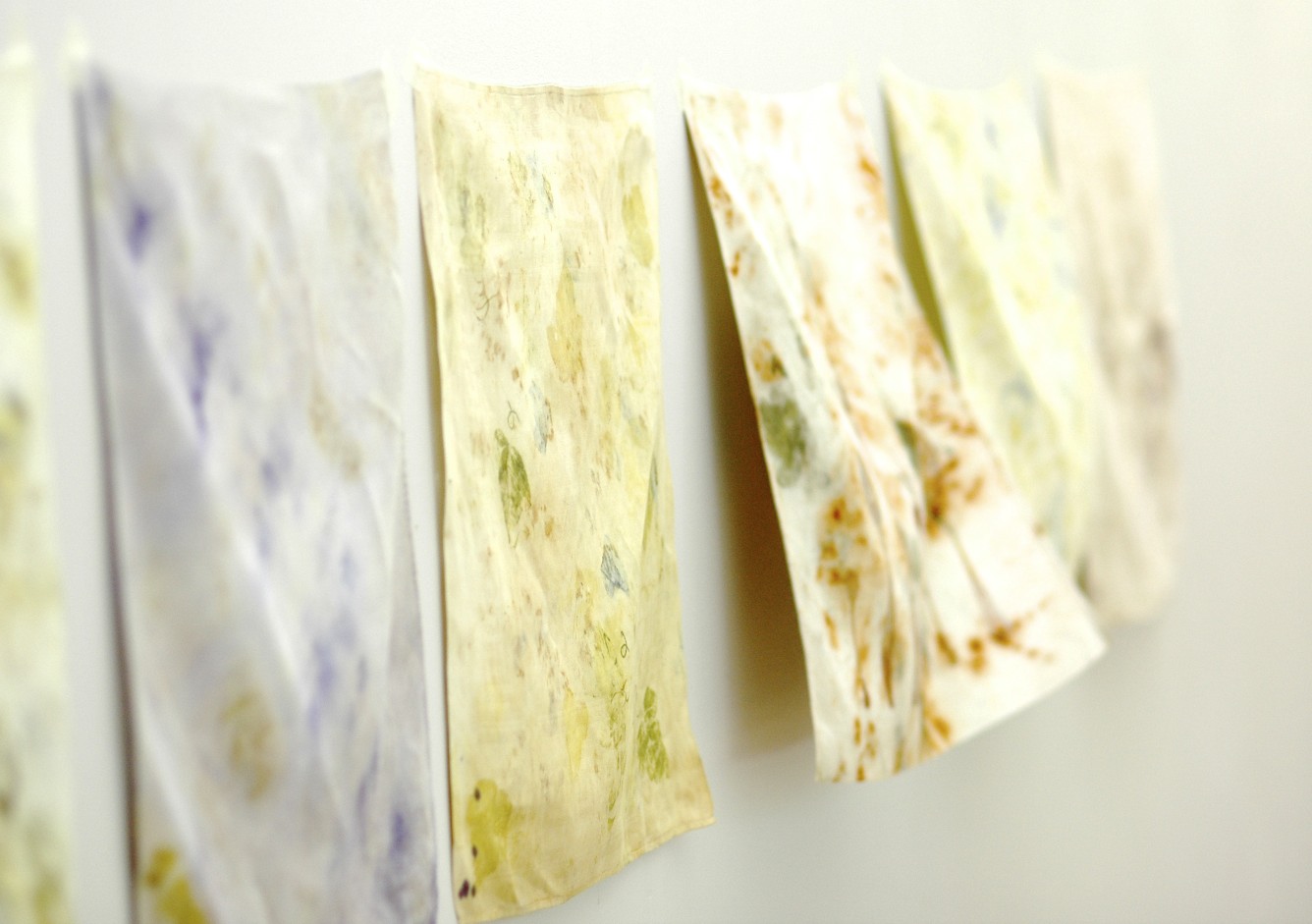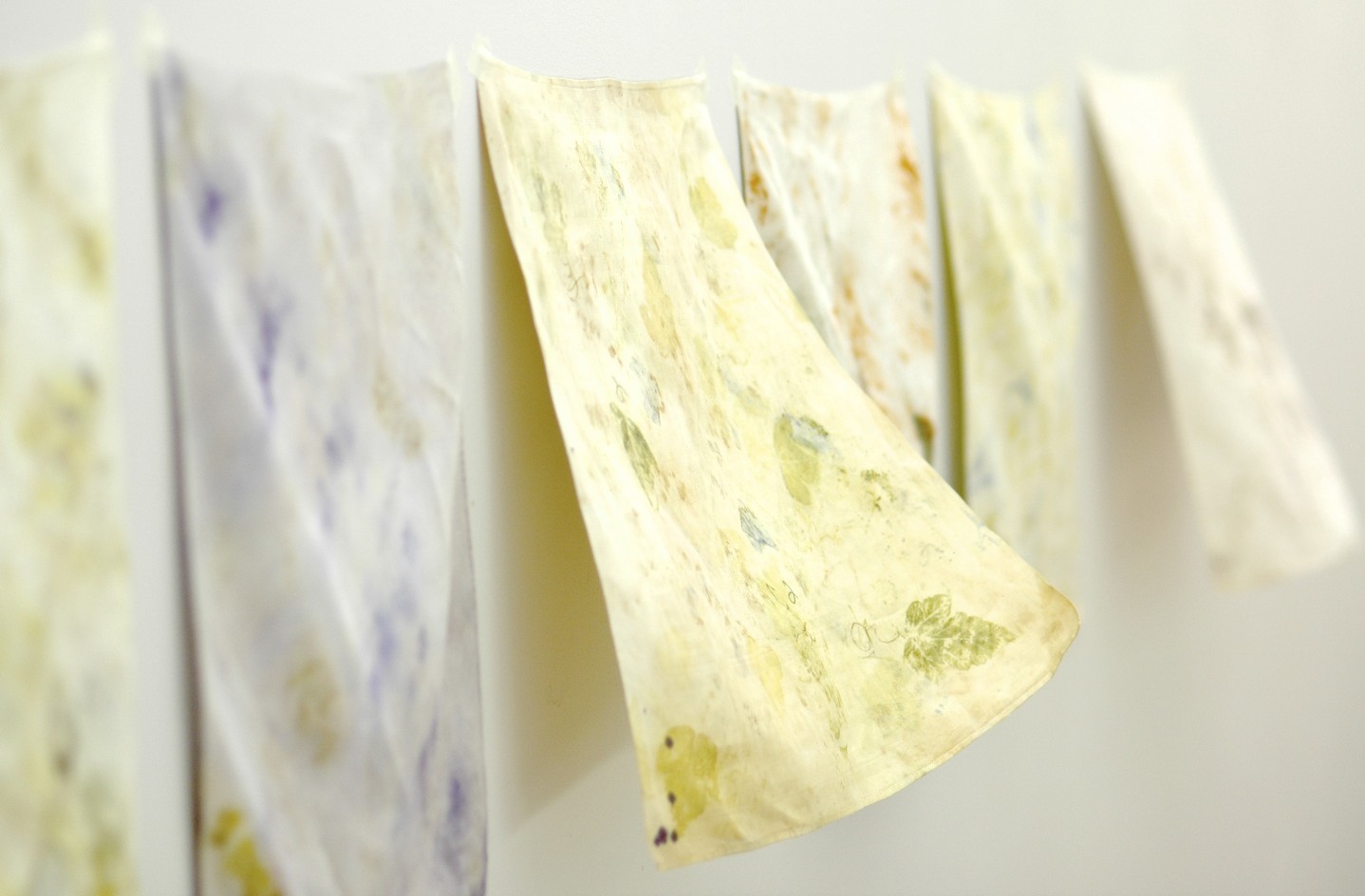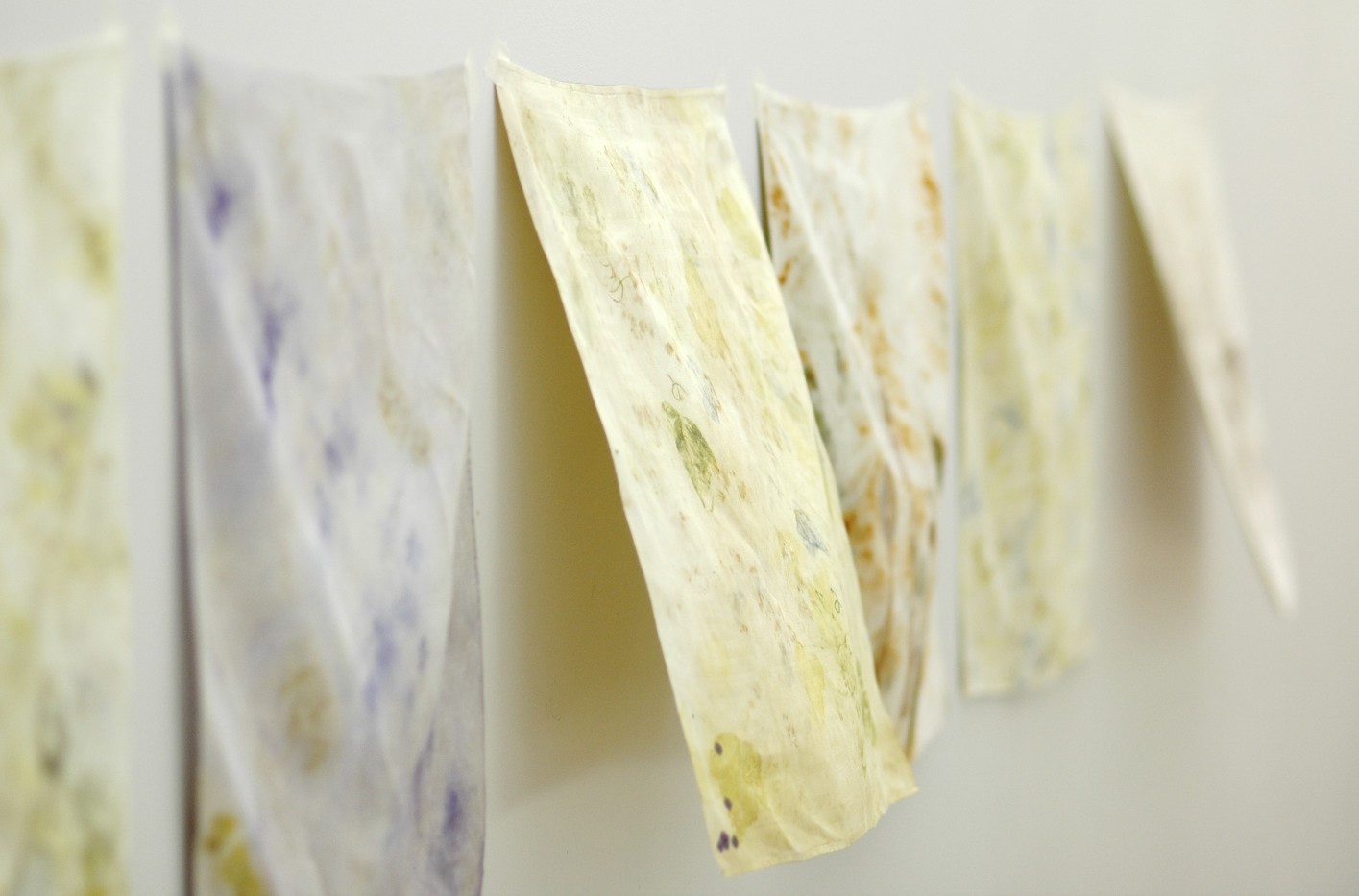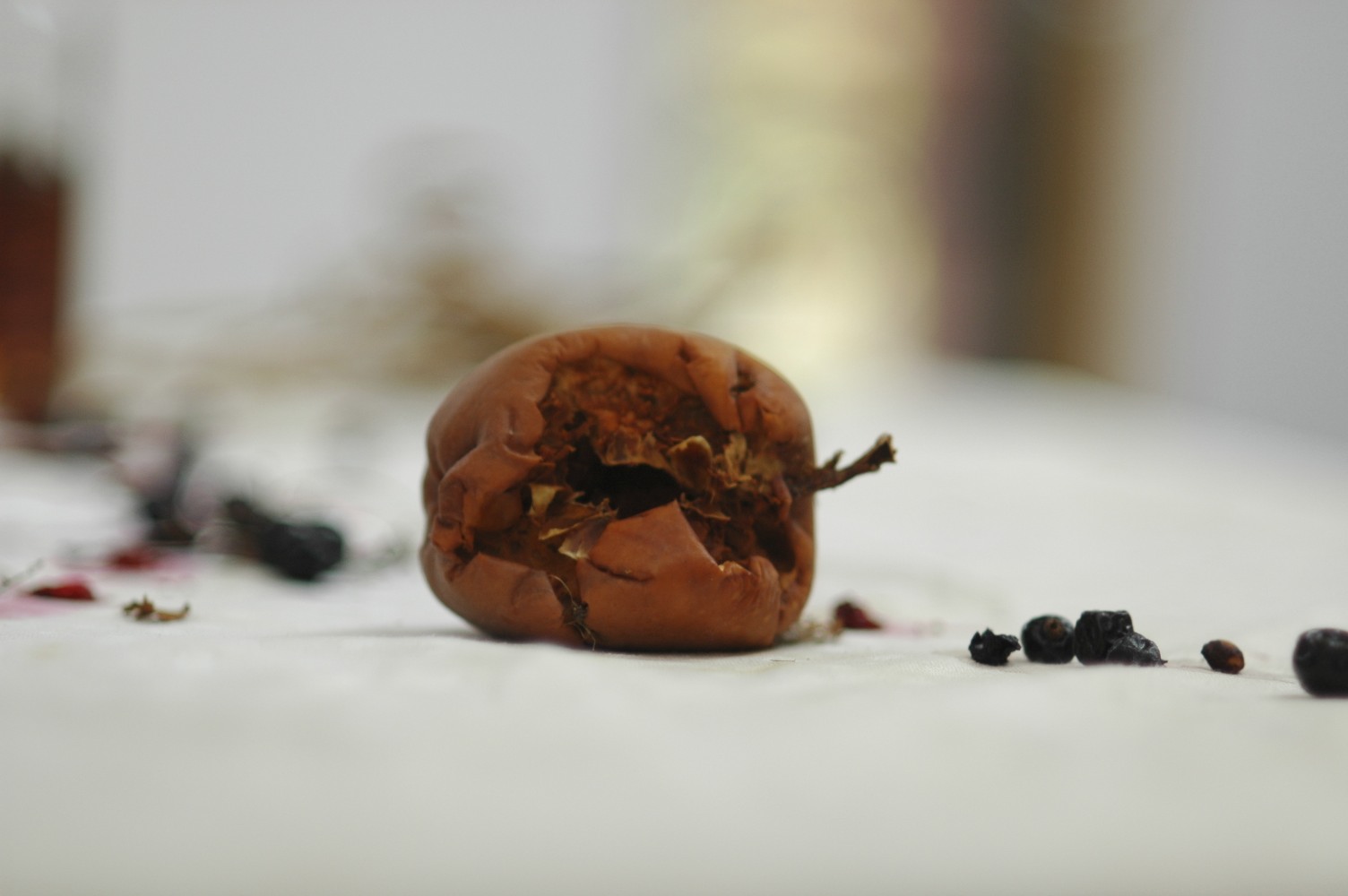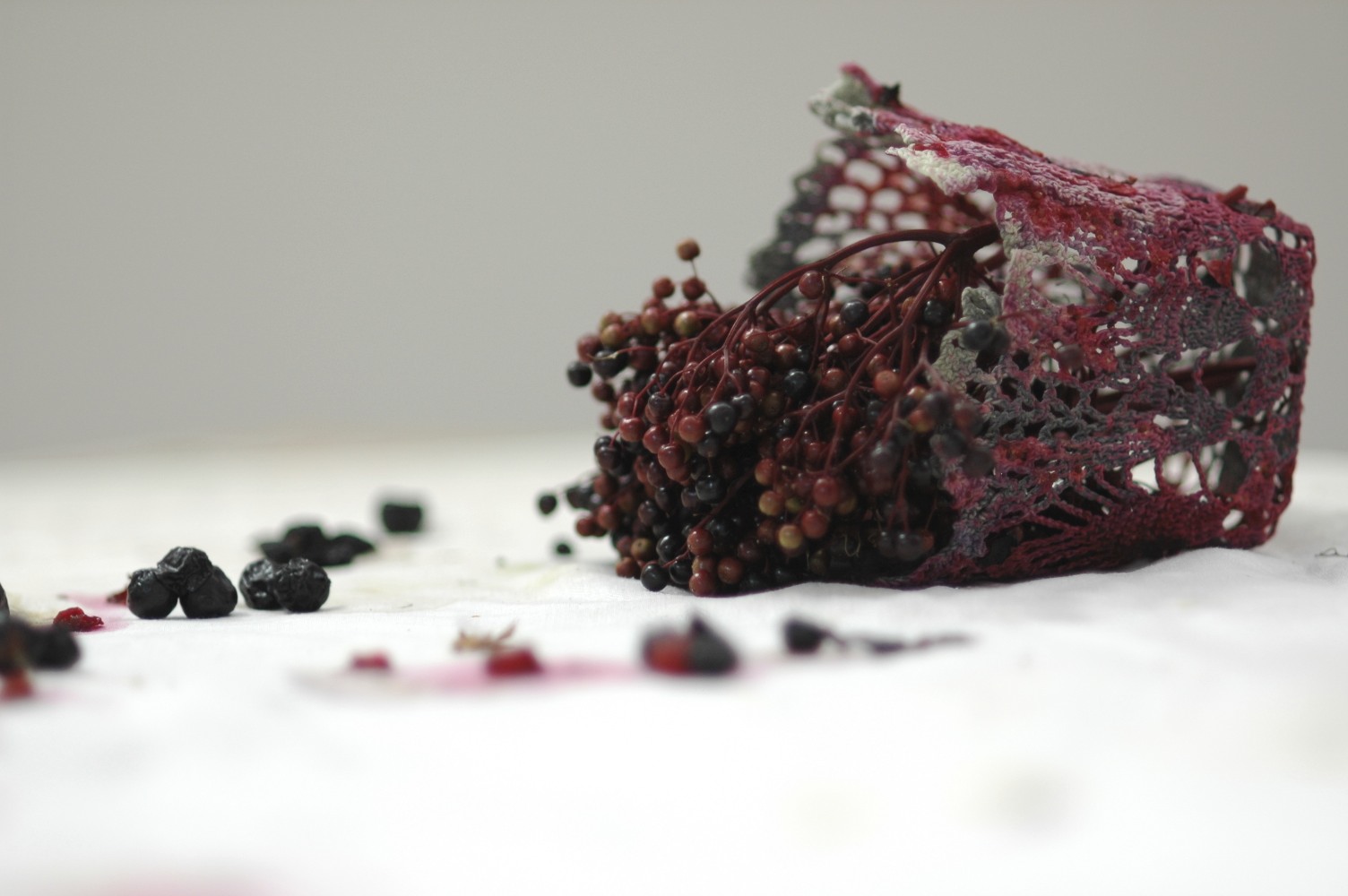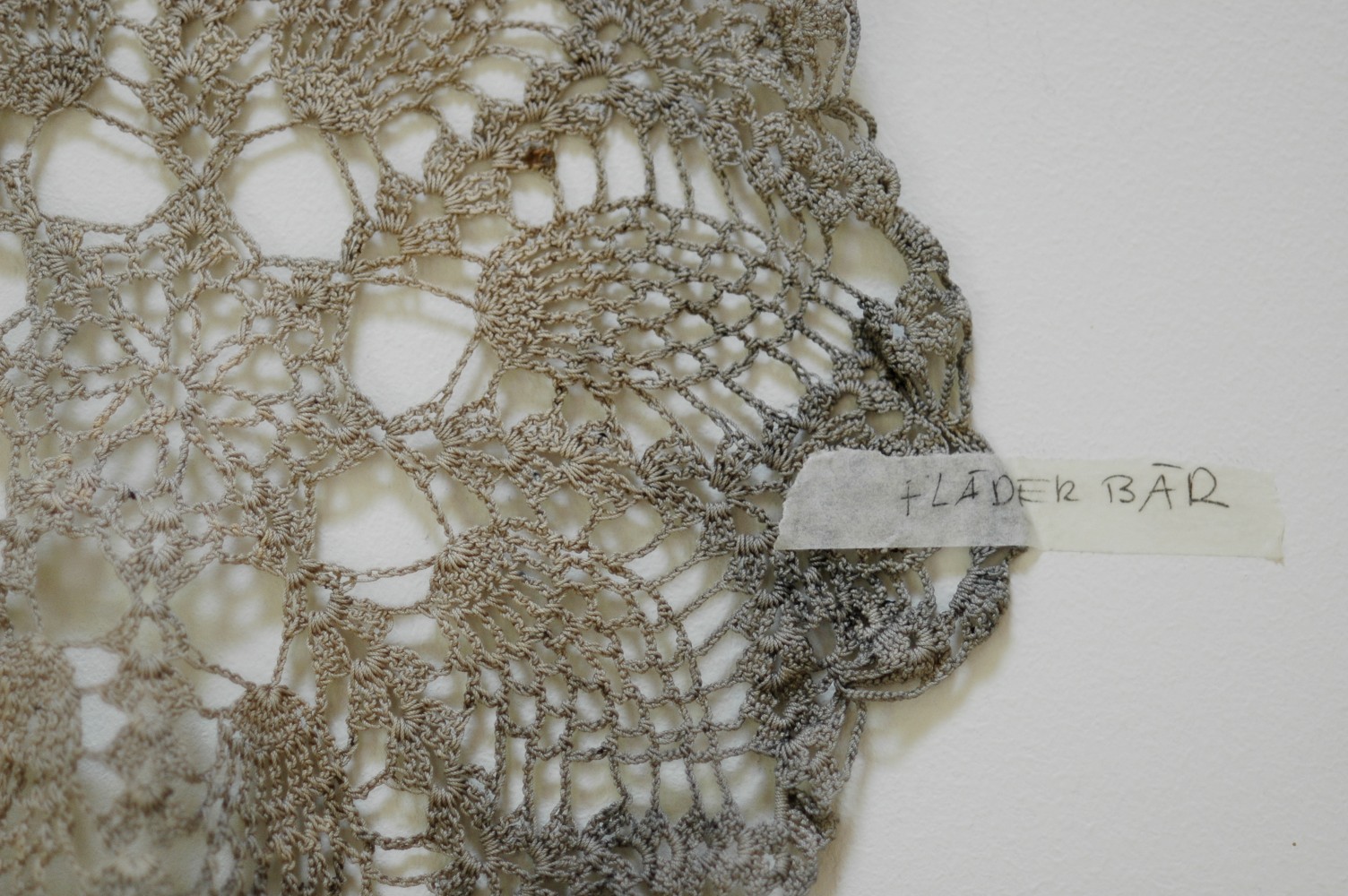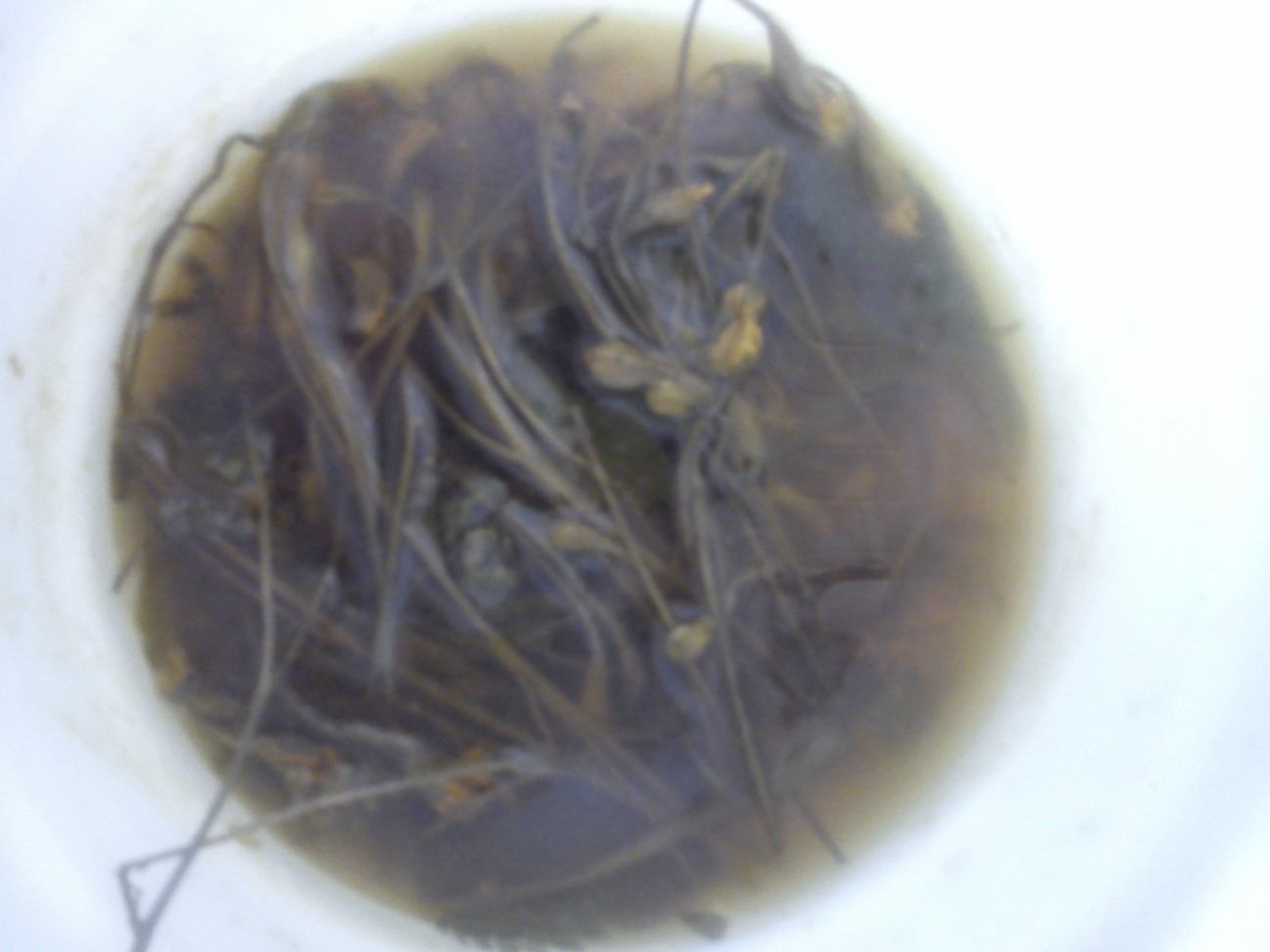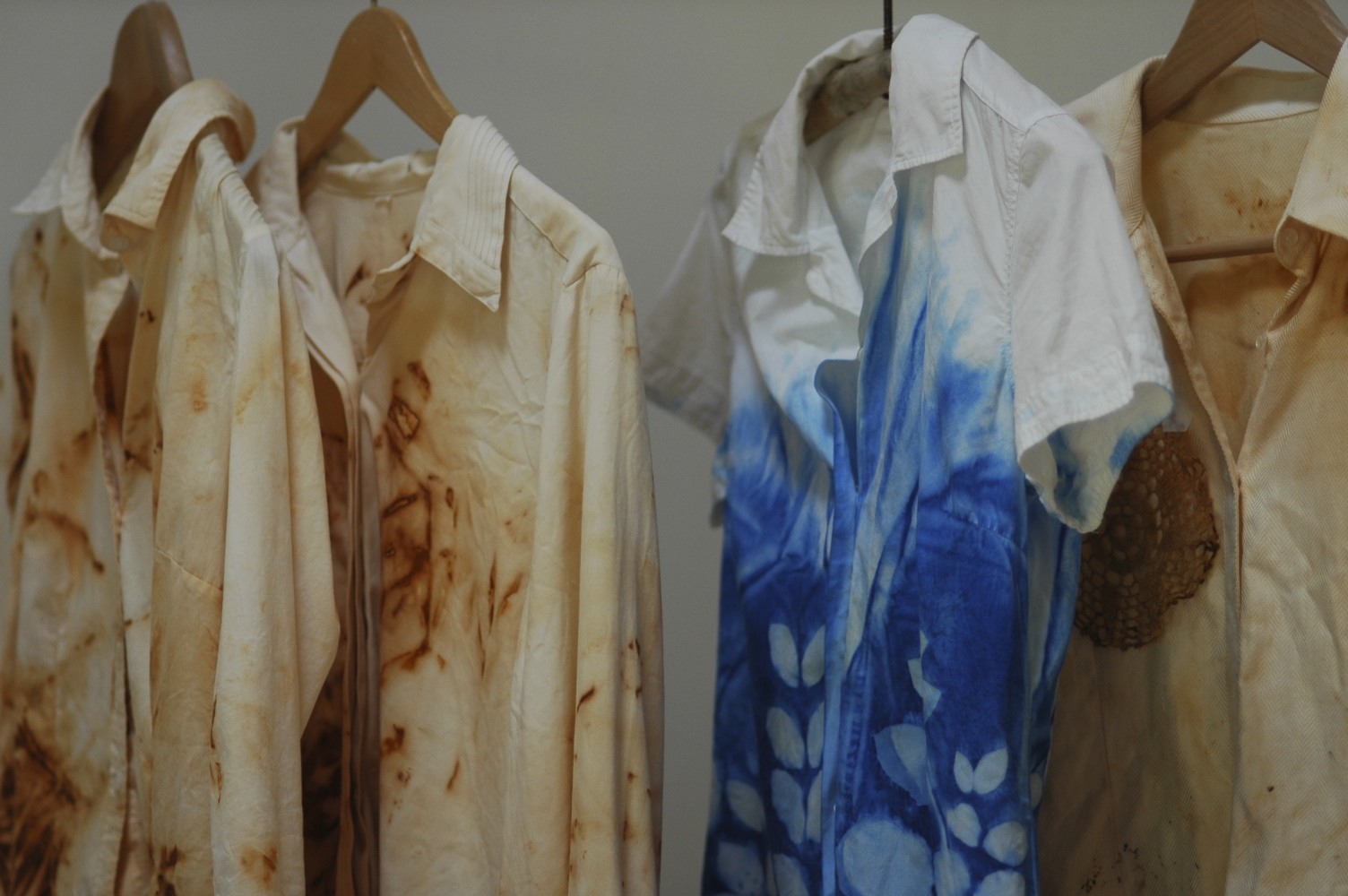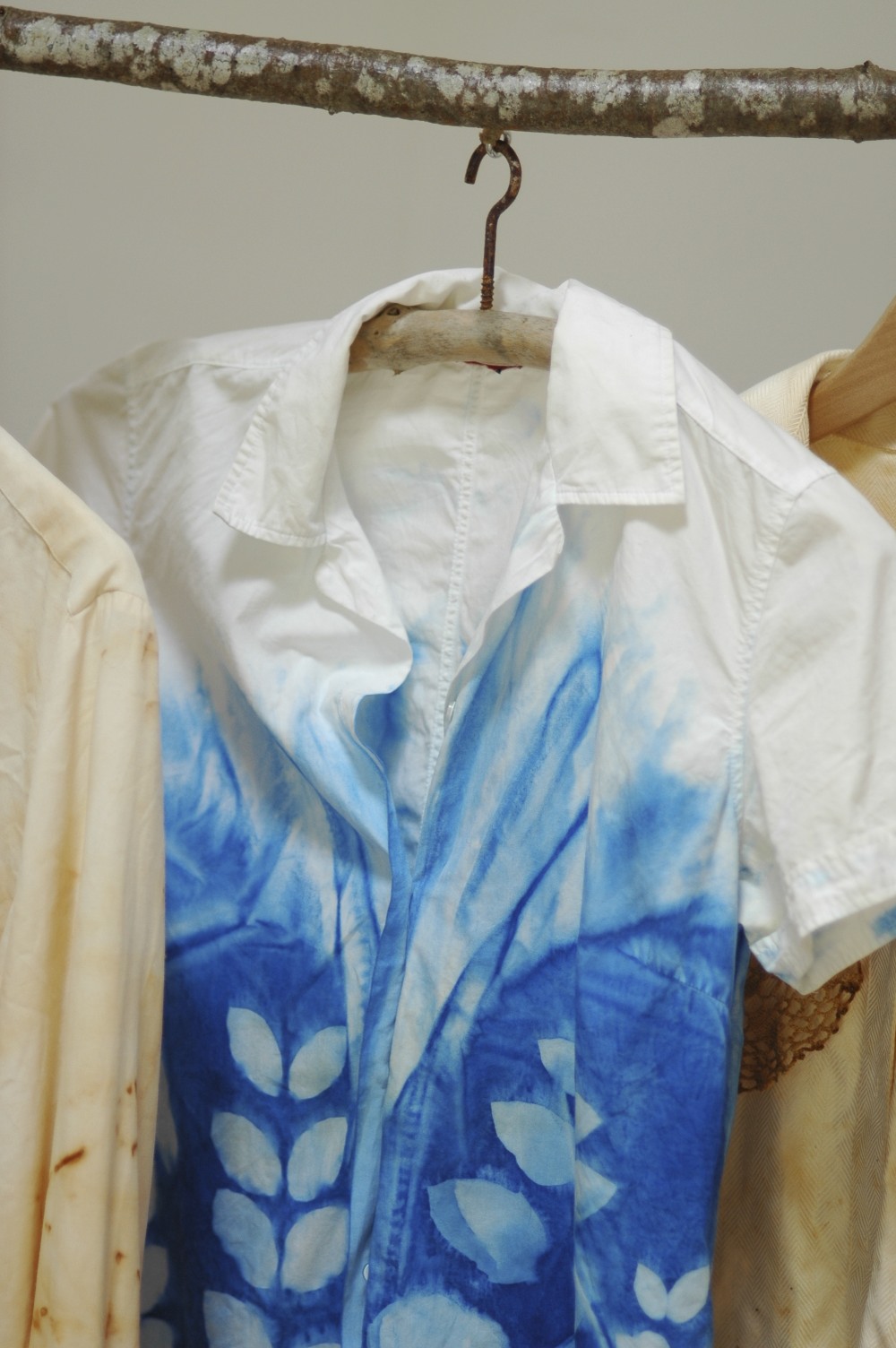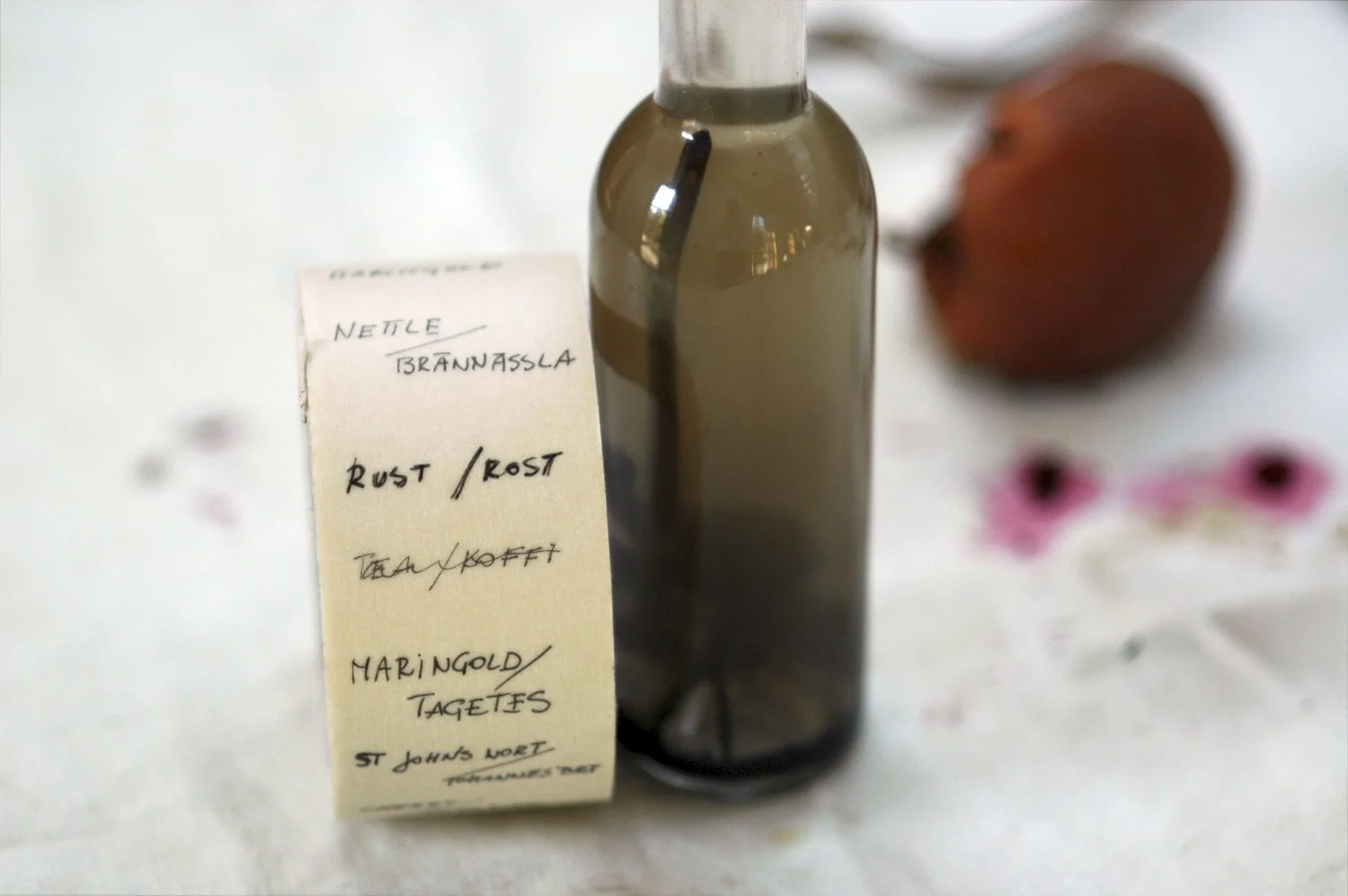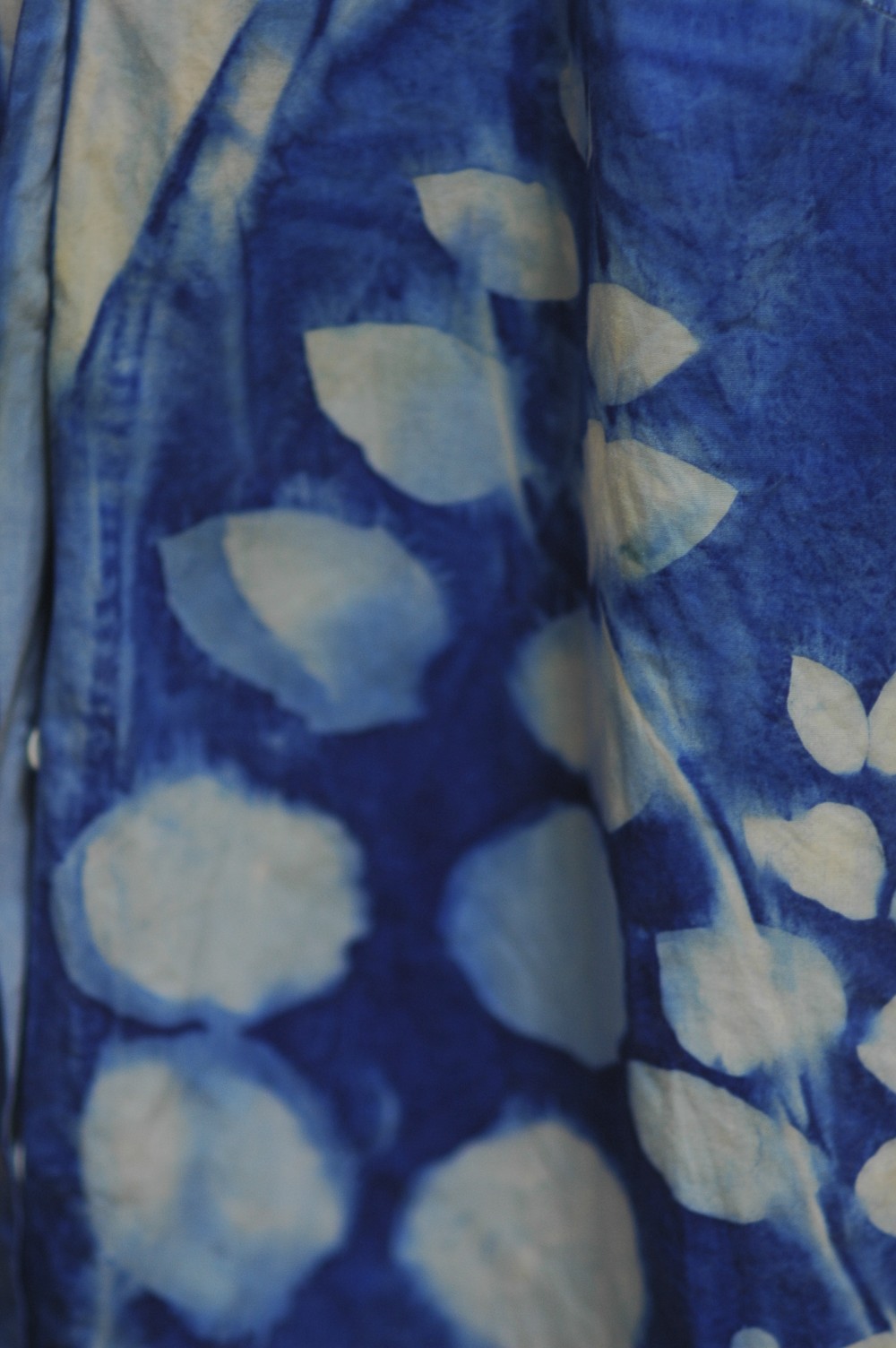I took advantage of Thursday’s sun-shine-moments to do some sunny eco prints.. <3
I mean that it is Sun printing it is friendly it is beautiful and quiet. The Sunlight is fixing the paint into the textile, it really is washable and really is long-lasting. Years ago I felt totally in love with this process, since then I was trying to research it a little bit more and now I can actually do it. well you really need to have a heat and you need to have the sunlight so in Sweden it is like few-weeks-a-year process, it makes it even more exciting. The waiting for the right time and for the right temperature and then to really quickly organise the work on the surface, I think this is that one part I really like the most. You think but you cannot overthink, it just to pick the flowers you have around you and you only have this few minutes because otherwise your paint is fixed by light even if you do it inside of the house. So it's a quick, no thinking, intuitive process and the effects are amazing. in shop
Mandala of New Beginnings,
Sunkissed

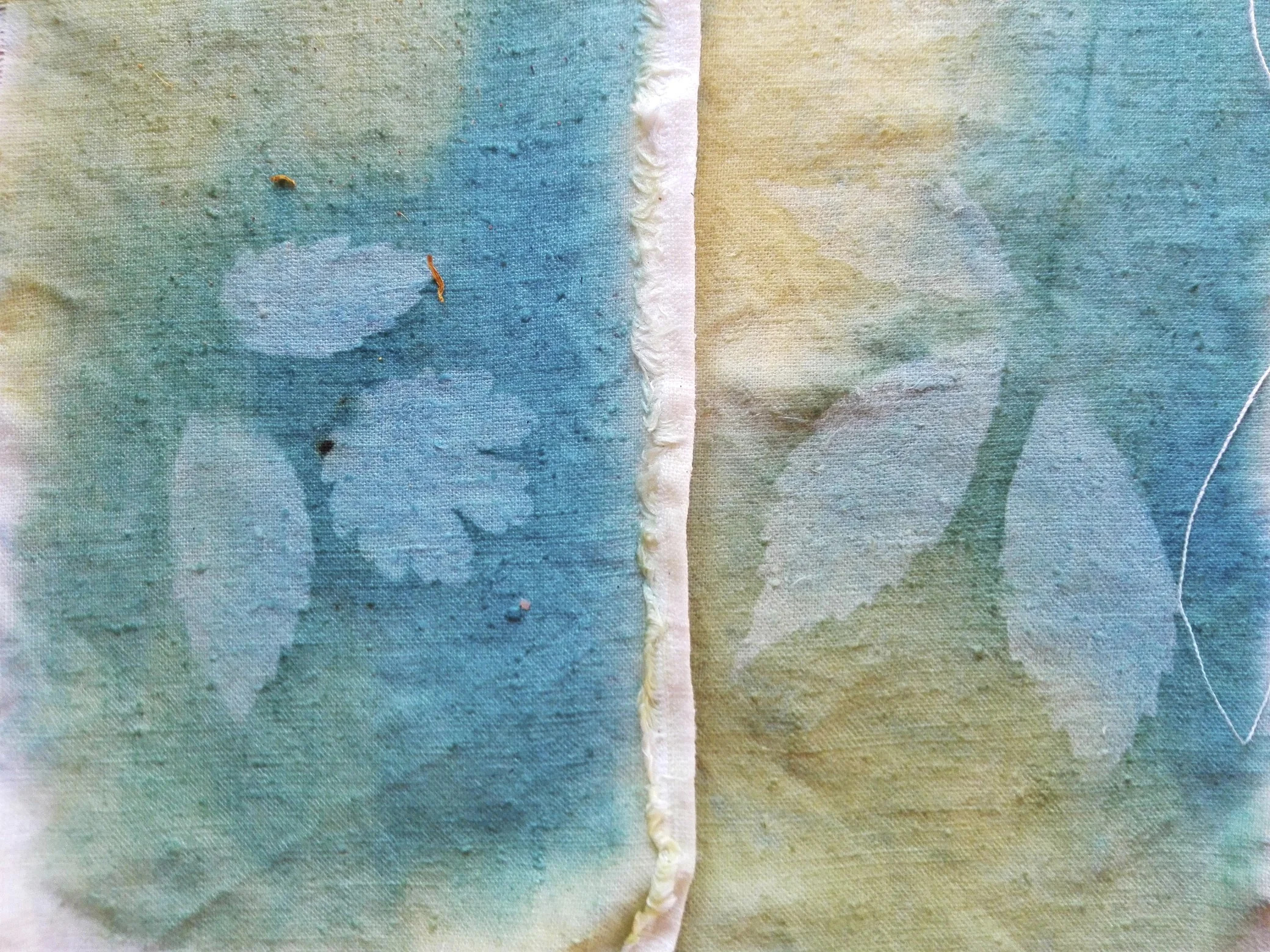
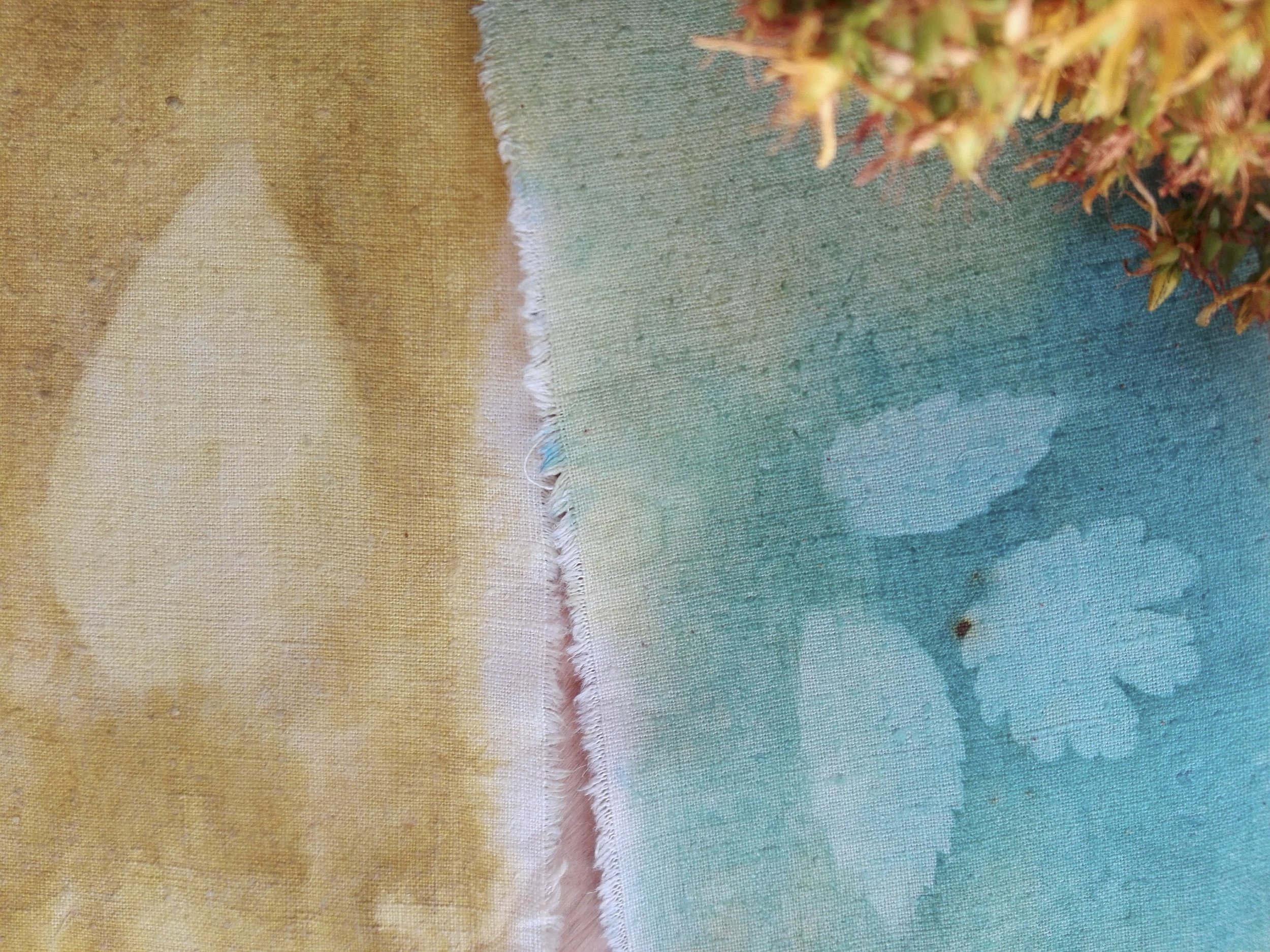


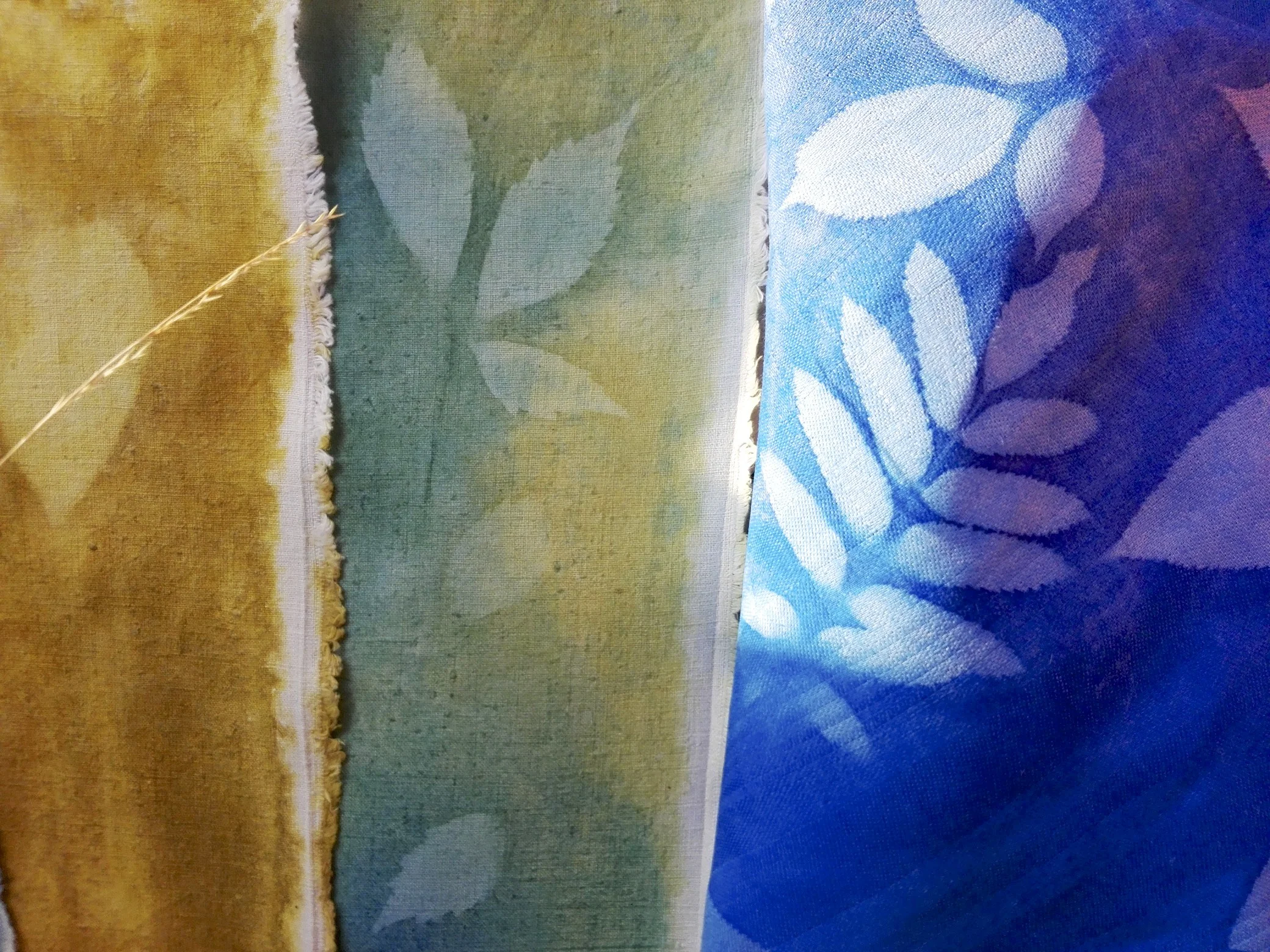
ÅH this Blue!!







